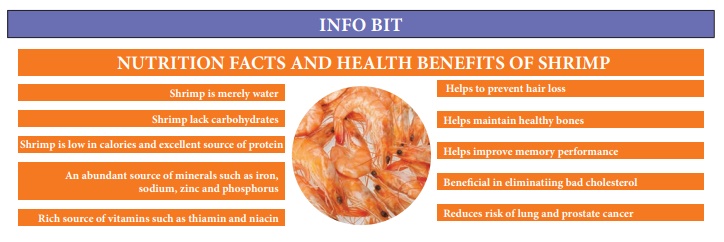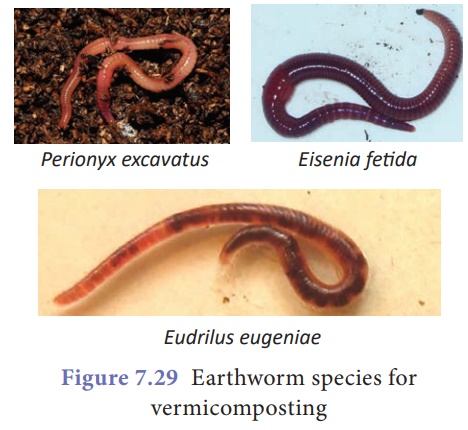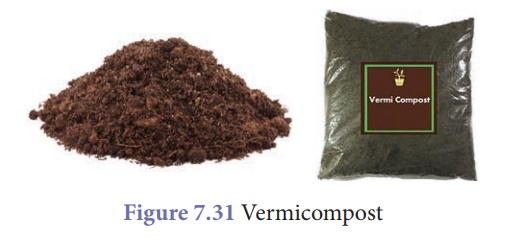Vermiculture, Vermicompost, Materials required, Methods, Advantages - Vermitechnology | 9th Science : Economic Biology
Chapter: 9th Science : Economic Biology
Vermitechnology
Vermitechnology
The awareness of organic matter and concept of sustainable agriculture is gaining importance among our farmers in the recent years to produce good quality crops. Maintenance of soil organic matter is very important for sustainable productivity. Biowaste, especially the organic fraction of solid waste, can be reused for soil conditioning after composting. Recycling of available biowastes from different sources is helpful and can reduce environmental pollution.
1. Vermiculture
Vermiculture involves the artificial rearing or cultivation of earthworms and using them for the production of compost from natural organic wastes. These wastes are degraded into nutrient rich manure that can be used as vermicompost.

2. Earthworm species used for vermiculture
Different types of
earthworm are living in our soil. Among the vast community of earthworms only
very few species can be used for vermicompost production. They are Perionyx
excavatus (Indian blueworm), Eisenia fetida (Red worms), Eudrilus
eugeniae (African night crawler).

3. Vermicomposting
It is an important
component of organic farming which can convert bio-wastes into nutrient rich
organic manure by using earthworms. The burrowing and soil feeding habits of
earthworms make the soil porous which permits both aeration and quick
absorption of water. It feeds on the organic wastes and excrete it in digested
form known as castings. The compost is generally called vermicompost.
4. Vermicompost
Vermicompost is the
excreta (worm castings) which is a fine, granular organic matter formed by the
decomposition of organic materials by the earthworm. It improves physical,
chemical and biological properties of the soil and makes it an ideal fertilizer
for the soil.
5. Materials required for vermicomposting
Biologically degradable
organic wastes are used as potential organic resources for vermicomposting.
They are:
·
Agricultural wastes (crop residue, vegetables waste, sugarcane
trash)
·
Crop residues (rice straw, tea wastes, cereal and pulse residues,
rice husk, tobacco wastes, coir wastes)
·
Leaf litter
·
Fruit and vegetable wastes
·
Animal wastes (cattle dung, poultry droppings, pig slurry, goat
and sheep droppings)
·
Biogas slurry
6. Methods of vermicomposting
Vermicomposting methods
can range from a wormbin in the kitchen for household scraps to large
mechanized systems, which can be able to accommodate tons of organic material.
In general these methods are of the following types:
·
Bin (or) Container method
·
Vermicomposting of organic wastes in field pits
·
Vermicomposting of organic wastes on ground heaps
Let us now study how
vermicompost is obtained by bin method.
Vermicomposting by bin method
It is the rearing of
earthworms in a container or bin. The container is half filled with bedding
materials such as shredded cardboard, leaves, paddy husk, chopped straw, saw
dust and manure. Small quantity of soil and sand is added to provide necessary
grit for the worms. The bedding material should be moistened by adding water
that enables free movements of the worms. The worms are gently placed and
spread evenly on the bedding.
Organic wastes (kitchen
wastes, vegetable and fruit wastes) are added which are fed by the earthworms.
The bin is covered with coconut leaves or gunny bags to conserve moisture,
provide darkness and keep out of pests. After a period of 60 days the wastes
are completely transformed into nutrient rich materials that are excreted by
earthworms known as worm castings. These castings are harvested and used
as organic manure.

7. Advantages of Vermicompost
Vermicompost is dark
brown in colour and similar to farmyard manure in colour and appearance.
·
It is a rich source of nutrients essential for plant growth. It
makes the soil fertile.
·
It improves soil structure, texture, aeration and water holding
capacity and helps to prevent soil erosion.
·
It contains valuable vitamins, enzymes and growth regulator
substances for increasing growth, vigour and yield of plants.
·
It enhances decomposition of organic matter in soil.
·
Vermicompost is free from pathogens and toxic elements.
·
Vermicompost is rich in beneficial microflora.

Related Topics